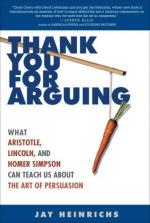|
This section contains 4,732 words (approx. 16 pages at 300 words per page) |

|
SOURCE: "Homer and the Reader," in Homer, Yale University Press, 1985, pp. 1-18.
In the following essay, Vivante offers a stylistic analysis of Homer's epic verse, in particular, his use of recurrent images, analogies, and epithets.
The child's first impressions on hearing Homer are as deep as they are vivid. The wrath of Achilles conjured up all at once; Achilles and Agamemnon standing out in strife against each other; Chryses suddenly appearing before the Achaeans to ransom his daughter; Chryses rebuffed and walking in angry prayer along the shore; Apollo listening and descending from Olympus—such scenes, enacted as they are moment after moment, are naturally impressive by virtue of their own strength.
How to explain the spell they cast upon a child's mind? How to explain it quite apart from any preliminary learning? One reason for it is precisely that no preliminary learning is required. For these scenes...
|
This section contains 4,732 words (approx. 16 pages at 300 words per page) |

|


